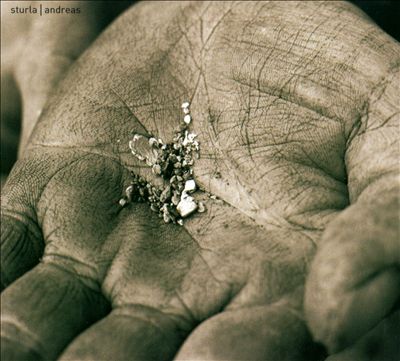 There’s always something captivating about a well-done album of traditional folk music, especially in the area of traditional instrumental music. It’s something that goes beyond the notes on the paper to the idea that the traditions of performance themselves have in some way been transmitted down to us, and that in the hands of, say, a learned harpist, we might be able to know with some degree of reliability just what Turlough O’Carolan’s harp playing sounded like. Not just what the tunes sounded like, but what they sounded like when played by the master who wrote them. For me, this is one of the most seductive aspects of traditional music, and it’s why Glimmer is such a seductive album.Released on Norway’s 2L Records label (which focuses on acoustic music), Glimmer is a fascinating journey through the land of Norwegian traditional fiddle and guitar music. Sturla Eide performs the fiddling tasks, and most of the chief melodies fall to him as he plays the violin and that wonderful Norwegian six-stringed Hardangerfiddle. Andreas Aase accompanies him on the guitar and the Irish bouzouki, mostly providing tasteful harmonic and rhythmic background. And that’s it: each instrumental track (eleven in total) features just these two men. No percussion, no pipes or whistles, no singing — just a fiddle and a guitar. And since the music here was recorded in a church in Oslo, the resulting effect is one of warm, crystal clarity. This is one of the best sounding discs I’ve heard in some time: closing my eyes, I could almost believe that I was in that church with these two musicians.
There’s always something captivating about a well-done album of traditional folk music, especially in the area of traditional instrumental music. It’s something that goes beyond the notes on the paper to the idea that the traditions of performance themselves have in some way been transmitted down to us, and that in the hands of, say, a learned harpist, we might be able to know with some degree of reliability just what Turlough O’Carolan’s harp playing sounded like. Not just what the tunes sounded like, but what they sounded like when played by the master who wrote them. For me, this is one of the most seductive aspects of traditional music, and it’s why Glimmer is such a seductive album.Released on Norway’s 2L Records label (which focuses on acoustic music), Glimmer is a fascinating journey through the land of Norwegian traditional fiddle and guitar music. Sturla Eide performs the fiddling tasks, and most of the chief melodies fall to him as he plays the violin and that wonderful Norwegian six-stringed Hardangerfiddle. Andreas Aase accompanies him on the guitar and the Irish bouzouki, mostly providing tasteful harmonic and rhythmic background. And that’s it: each instrumental track (eleven in total) features just these two men. No percussion, no pipes or whistles, no singing — just a fiddle and a guitar. And since the music here was recorded in a church in Oslo, the resulting effect is one of warm, crystal clarity. This is one of the best sounding discs I’ve heard in some time: closing my eyes, I could almost believe that I was in that church with these two musicians.
As for the music itself, it’s pretty interesting stuff. The basic tone of it will be familiar to any experienced listener of traditional Celtic music, but it’s specifically not Celtic music: it’s Norwegian music. I’d be hard pressed to spell exactly what that distinction entails; this is one of those “Listen to it and you’ll hear it” kind of things. The most captivating facet of the music, aside from the melodies themselves, are their rhythms. The liner notes read in part:
Every single melody in Norwegian traditional music is saturated by rhythm, simply because the tunes had to be danceable by themselves a long time ago — the melody is in the rhythm, the rhythm is in the melody. So when Andreas’ guitar and occasional bouzouki is added to Sturla’s fiddle and hardanger fiddle playing, it is done in a thoughtful and gentle way. Since these tunes work perfectly well on their own, they are merely adorned with the simplest of chord progressions and the most discreet pulse.
That turns out to be an accurate description of the approach here. Each track has a strong sense of rhythm, and these rhythms are indeed inherent to the melodies. It’s often easy for the rhythms to be muddied or lost entirely on recordings such as this, but that never happens here.
The only disappointment I would voice with this CD is in the packaging, which doesn’t provide much information about the music itself. Interestingly, there are extended versions of the liner notes available on the Web site, but some of this information — particularly the helpful background notes on each track — would have better been included in the CD’s actual notes. Much of the music on this disc springs from Norwegian fiddlers from as long ago as 150 years; more information on how these tunes have survived would have been welcome. Still, this is a small quibble, and it should by no means dissuade anyone interested in Norwegian traditional music, or just plain good music, from seeking out this disc.
(2L, 2003)
